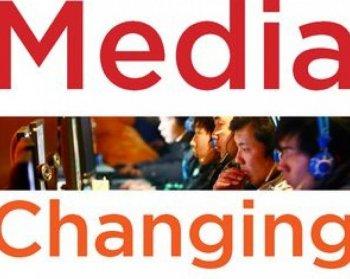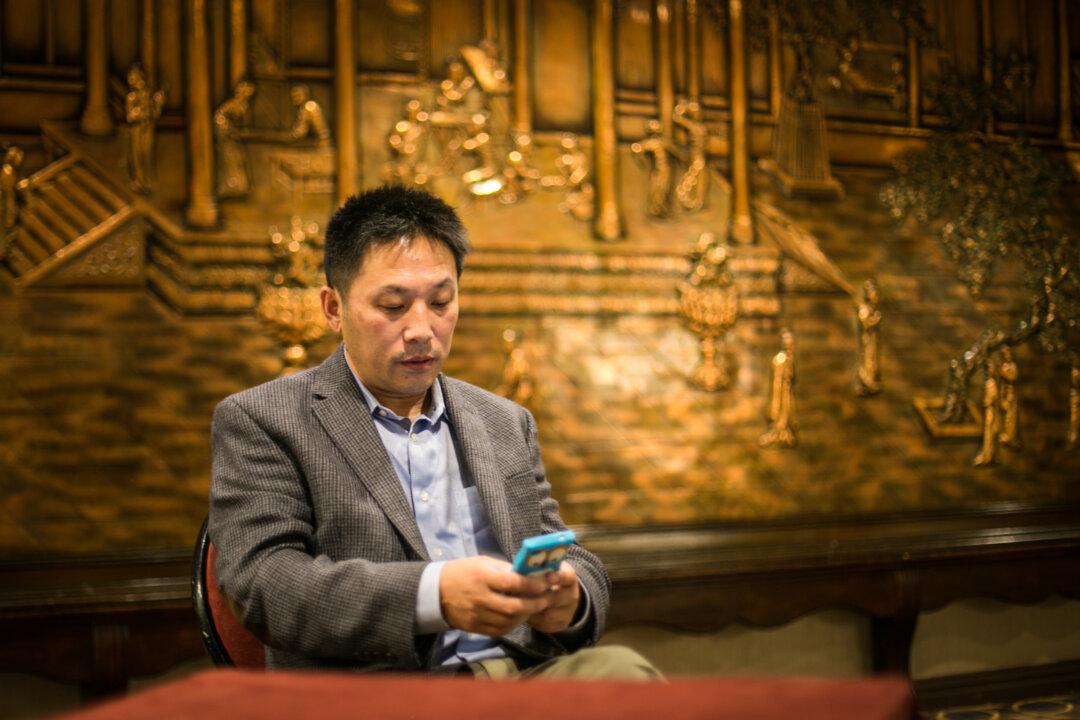Shirk, Susan (ed.). “Changing Media, Changing China,” Oxford University Press (November 2010), ISBN 9780199751983, pp. 288, $99.
[xtypo_dropcap]O[/xtypo_dropcap]n Oct. 27 Cheng Jianping, an online ‘activist,’ disappeared. It was ten days after she had posted a sarcastic message about anti-Japanese protests on Twitter. She had been abducted by police, and was sent to re-education through forced labor for one year. That is an administrative sentence, given by the police, with no judicial oversight.
A trend can often be illustrated by some specific case, a series of events the microcosm of a larger dynamic. When it comes to the battle between the Chinese Communist Party and the media, there are too many such cases to know where to begin. Cheng’s is a recent, particularly execrable one.
There is also, for example, the 2003 case of Sun Zhigang, a young man whose death at the hands of police sparked a media and public outcry that forced central Party authorities to change the law on handling people without ID cards.
There’s the March 2007 case of a paraxylene chemical factory that was going to be built in Xiamen, until a reporter exposed the hidden dangers and thousands used the Internet and SMS to organize, gather, and protest.
Then there’s the child-slave-labor brick kiln scandal of 2007 (it means what you guessed—‘businessmen’ were kidnapping children and forcing them to work in brick kilns, under the watchful gaze and to the tidy profit of Party officials), the tainted milk powder scandal of 2008, and most recently the Li Gang case of 2010.
The Li Gang case was not included in Susan Shirk’s edited volume Changing Media, Changing China, which is a testament to the rapid pace of developments in China. But it lies at one end of the familiar pattern: the tension between the Communist Party and its censorship apparatus on the one hand, and the Chinese people and their right to know on the other.
In the Li Gang case the son of a police chief hit and killed a young lady whilst driving his BMW. When confronted by security guards he yelled “My dad is Li Gang!”, a sentence which encapsulated for many the injustice of modern Chinese society, where those with connections to the Party are often above the law.
At the other end of the spectrum are the protests that took place in Dongzhou, Guangdong Province, in 2005. There, as in Xiamen, villagers protested against a chemical plant. In this case police opened fire, killing some who had already been shot and were lying on the ground incapacitated. The police destroyed corpses, made hundreds of arrests, closed off roads and shut down Internet cafes. A watered down version of the old-style ‘thought reform’ campaigns ensued.
If, like Lenin’s Russia, the power of the Chinese Communist Party rests on a balance of coercion and persuasion, Shirk’s volume has the cumulative impact of convincingly showing how the power to persuade is being gradually eroded. Each time a compelling story of Party corruption goes viral, the Party’s ability to mold the thoughts of the masses recedes.
Whereas academic study of China’s media in earlier decades could only treat official propaganda, Shirk’s volume is an appraisal of the shift, since 1979, to allow newspapers, magazines, and television stations to compete in the market, sell their own advertisements, hire their own staff, and write their own stories.
The rest of the story, the oscillations between freedom and repression, is like a tug of war, or an unfair game of cards with an irascible, violent old man. Journalists and the public are allowed to play according to the rules, for a while. But when the old man knows he has a losing hand he simply snatches cards off the other players, slaps one of them over the head, or if it starts looking bad, simply stands up and overturns the table in anger.
After an introductory chapter by Shirk, David Bandurski and Qian Gang discuss China’s emerging public sphere, with particular emphasis on the rise of professional journalists. This chapter is heartening, but one does not get the sense of how prevalent these White Knights are, or their status in the eyes of the broad mainstream.
One suspects they are a minority, and that many other journalists are indirectly or implicitly reinforcing the Party’s rule and updated messages to the public. Though it is no longer Mao Zedong Thought being trumpeted from the speakerboxes, the media’s promotion of consumerism is “no less ideological,” as Yuezhi Zhao writes in her 1998 work Media, Market and Democracy in China.
Hu Shuli, a media entrepreneur and “China’s most dangerous woman,” follows with a chapter on the rise of business media in China, whose professionalism has again pushed the boundaries of permissible discourse. And one gets the impression that these boundaries are something like a ratchet: once new norms for what can be said publicly are proliferated, the Party has a very hard time winding things back.
Thus, while those two chapters make it is easy to be buoyed by the progressive developments in the newspaper and business magazine sector, the chapter on the broadcast sector by Miao Di comes as a kick to the stomach. Here the propaganda is undisguised, pervasive, monotonous, dull—and a massive portion of the populace tunes in to have their thoughts massaged. We see, through this chapter, that television is one of the strongest redoubts for the Maoist model of mass persuasion. Its impact on the public is more visceral, and so its control by Party apparatchiks is more hermetic.
Another redoubt is of course military journalism and the defence media market, in which Tai Ming Cheung contributes a chapter boldly titled Engineering Human Souls. In this case the patients are somewhat self-selecting: they are keen for a fix of patriotic propaganda on China’s killing power, and Party and non-Party transmission belts are only too pleased to serve it up. Military voyeurs are presumably also the more anti-Western and anti-American of the populace, a topic which the present volume does not delve much into.
Zhan Jiang has a chapter on environmental journalism in China. Overall the story is somewhere between equivocal and positive. Conclusions: 1) Journalists doing reports on the environment need to get more professional to have a bigger impact; 2) Exposing environmental problems helps get them resolved, and “nudges” (Zhang chose the right word, for the media can often do no more) the state to do something; 3) But all this does not do much to resolve the fundamental issue (i.e., the CCP itself). This is then, another field full of tension, between the Party and the people.
[xtypo_dropcap]T[/xtypo_dropcap]his tension appears again in Benjamin L. Liebman’s exploration of the dynamic between the media and the judiciary. Public opinion, conveyed through media, can be an effective way of altering the outcome of high-profile court cases. On the other hand, this can have the effect of reinforcing the CCP’s prerogative to control the outcome of those cases.
Simultaneously, positive legal propaganda reinforces the idea that genuine justice can be obtained from the Chinese judicial system. To rub salt in the ulcer, the Party uses the courts as a tool to sue for defamation the journalists who have exposed officials for corruption. The Party wins these cases, even when the corrupt officals have been convicted.
In the genuinely politically sensitive trials—for example, lawyers who defend the rights of Falun Gong practitioners and others—there’s simply no chance of media coverage in the first place.
Daniela Stockman contributes a chapter on what news sources people seek out in times of crisis. Part of it is disquieting. As Chinese increasingly feel that the old-style Party propaganda has gone stale, the leadership is intent on having nonofficial media work in service of its propaganda aims. The high-cred and uber-cool ‘independent’ status of these outlets, particularly on the Internet, makes them useful proxies in the inveigling of public opinion. This is noteworthy given the common assumption that nonofficial media are a force for eventual democratization in China.
Xiao Qiang’s penultimate article on the rise of public opinion, mediated through the Internet, is the best, most relevant, dynamic, and forward-looking in the whole book. We learn much that is already known, but the effect of the rehashing is to make one consider that, if any communication mechanism places enough power in the hands of the people that the Party becomes an anachronism, it is going to be the Internet that does so.
Why? Because of the demographics, to begin with: Internet users are young (70.6 percent are under thirty), well-educated (40 percent hold degrees), and forever chomping at the bit to subvert the hidebound bureaucrats with a battery of humorous memes.
“While the popular online communities often become the locus of the formation and crystallization of public opinion, the redundancy of clusters and links in the blogosphere constructs a networked information environment that makes absolute top-down control of content nearly impossible,” Xiao writes.
Lack of control enables symbolic protest, and the authorities have often been caught out by this pesky “redundancy of clusters.” Such happened in the Li Gang case, and the overwhelmingly public repudiation of the CCP—bitter, mordant, furious—was another irreparable blow to its prestige. Of course, the cadres still hold the cards.
The ability to ‘trump’ the competition holds true for every problem presented in the volume: the conflicts never escape the Party’s grasp. At any point officials can snatch the cards back, kick the table over, or bash a participant. But the value in this edited volume is that it shows that the ability to do so readily and publicly is lessening. Increasingly, the other contestants are yelling ‘foul’ and demanding the old man play by the rules. In some cases, it works.





